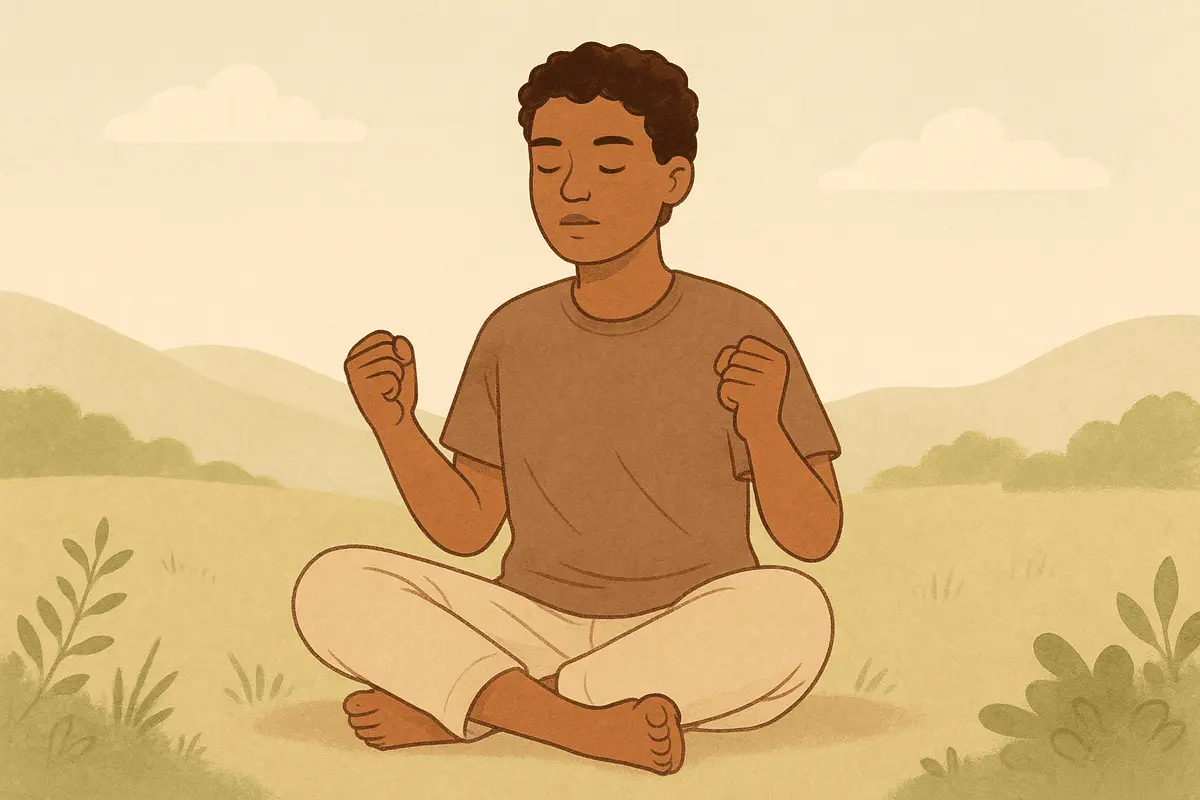The tense and release exercise systematically contracts and relaxes muscle groups to interrupt your body's stress response and reduce anxiety. This powerful yet simple technique promotes rapid relaxation and emotional grounding in just 3-6 minutes.

Feeling overwhelmed by stress, tension, or anxiety? The tense and release exercise offers immediate, drug-free relief that works in just 3-6 minutes. This technique involves intentionally tightening and then relaxing specific muscle groups, systematically reducing muscular tension associated with anxiety and stress buildup through deliberate physical engagement.
By engaging and then releasing muscles, this exercise quickly interrupts your body's stress response, promoting rapid emotional grounding and nervous system relaxation. This systematic approach improves sleep quality through increased bodily awareness and tension reduction, providing an accessible tool for immediate stress relief and long-term emotional regulation.
The tense and release exercise functions through multiple physiological and neurological mechanisms that create immediate and lasting stress relief.
Neuromuscular contrast is the foundation of this technique's effectiveness. Edmund Jacobson's research in the 1920s established that deliberately tensing muscles followed by release creates enhanced awareness of the difference between tension and relaxation. This contrast helps you recognize subtle tension you might normally miss and teaches your nervous system how to achieve deeper relaxation.
Parasympathetic activation occurs through the deliberate release phase. When muscles are systematically relaxed, it signals the parasympathetic nervous system to take over from the sympathetic "fight-or-flight" response. The parasympathetic nervous system acts like a brake, promoting the "rest and digest" response that calms the body down after stress.
Stress hormone reduction is measurable after tense and release practice. Research shows that progressive muscle relaxation techniques significantly reduce cortisol levels and other stress markers. When the body releases cortisol and adrenaline during stress, muscle tension naturally increases. The systematic release interrupts this cycle.
Breaking the tension-anxiety cycle is crucial for long-term relief. Anxiety and muscle tension share a reciprocal relationship, each exacerbating the other in a cyclic pattern. When we experience anxiety, our body activates the fight-or-flight response, triggering stress hormone release that causes muscles to tense. This technique interrupts that cycle.
Enhanced proprioception develops through focused attention on muscle sensations. Proprioception is your body's ability to sense itself in space, and systematic muscle engagement enhances this awareness. This heightened bodily awareness serves as a valuable tool for managing anxiety and recognizing early signs of stress buildup.
Clinical effectiveness is well-documented. Studies show that muscle relaxation techniques are effective for anxiety disorders, insomnia, and chronic pain conditions. Research demonstrates significant reductions in anxiety, stress, and depression symptoms when practiced regularly.
"I can't tell the difference between tense and relaxed": This is common initially. Try exaggerating the tension slightly or holding it longer (up to 7-8 seconds) to create a clearer contrast.
"Some muscles feel sore after tensing": You may be using too much force. Aim for firm engagement rather than maximum contraction. Skip any areas that cause pain.
"I feel more anxious when focusing on my body": Some people with trauma or anxiety sensitivity may feel uncomfortable initially. Start with just one or two muscle groups and gradually expand as comfort increases.
"My mind keeps wandering during practice": This is normal. When you notice your attention drift, gently return focus to the current muscle group. The wandering will decrease with practice.
"I don't feel relaxed afterward": Some people need several practice sessions to experience full benefits. Ensure you're spending adequate time (10-15 seconds) in the release phase noticing sensations.
"Certain muscle groups won't seem to relax": Areas of chronic tension may need extra attention. Try multiple tension-release cycles for stubborn areas, or incorporate gentle stretching.